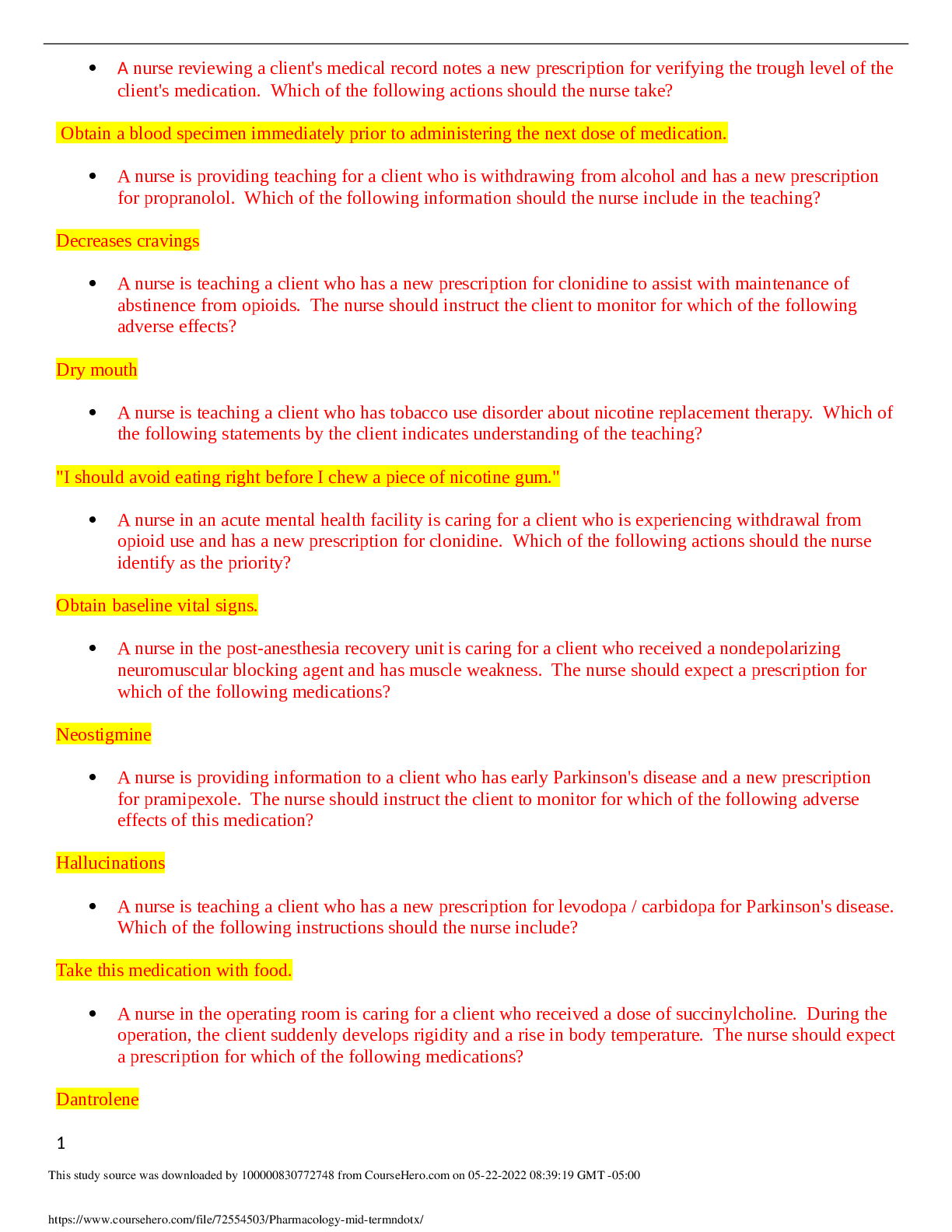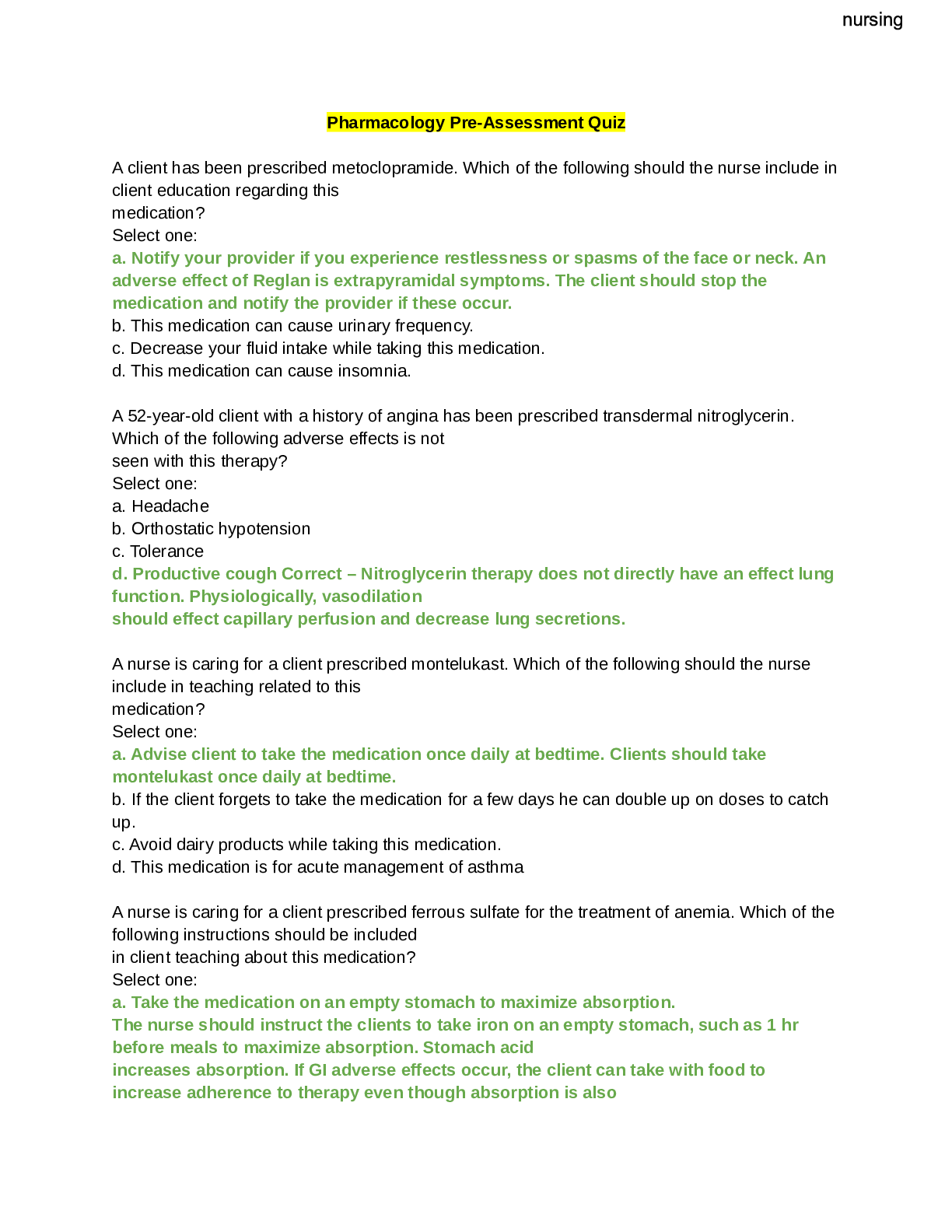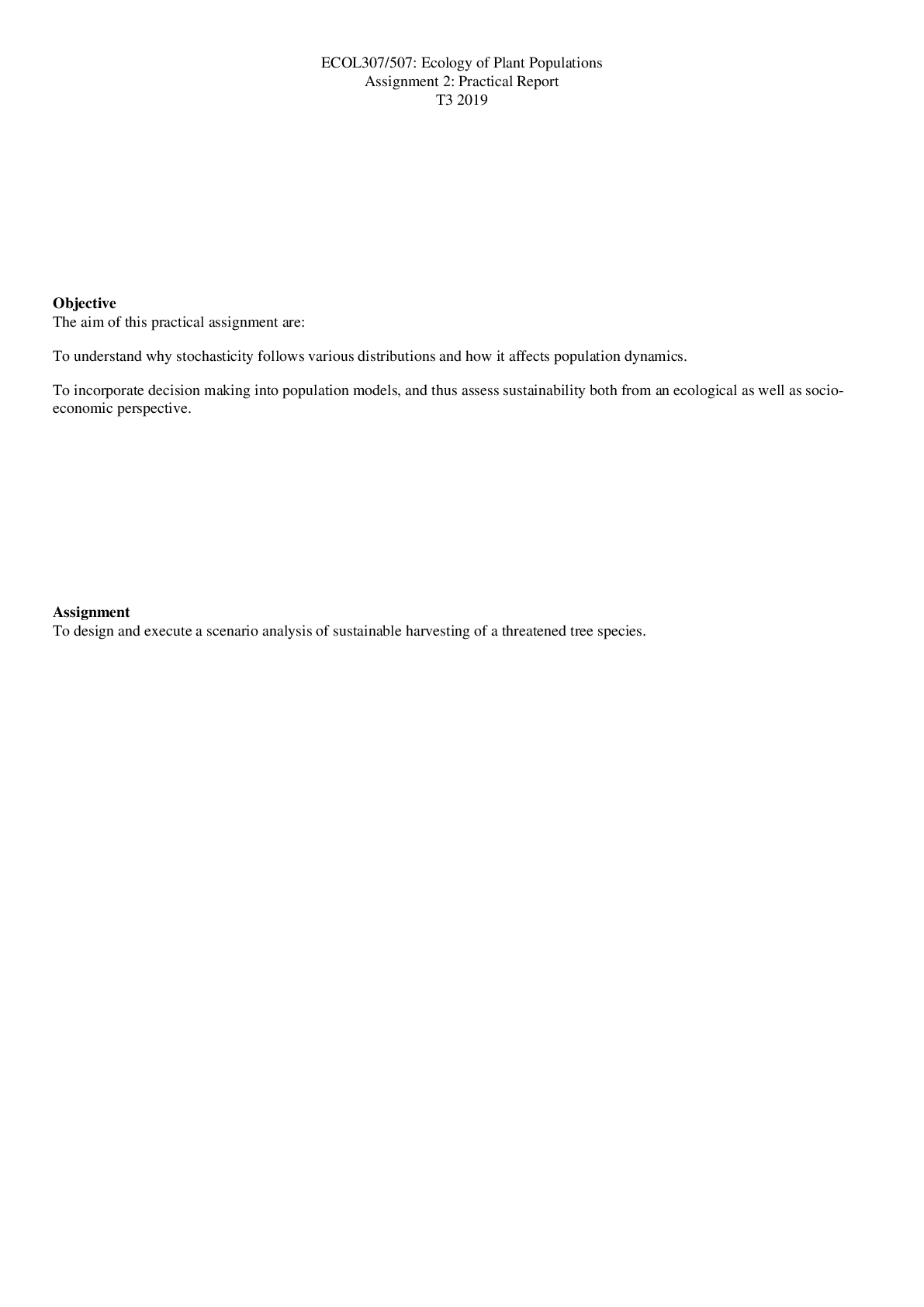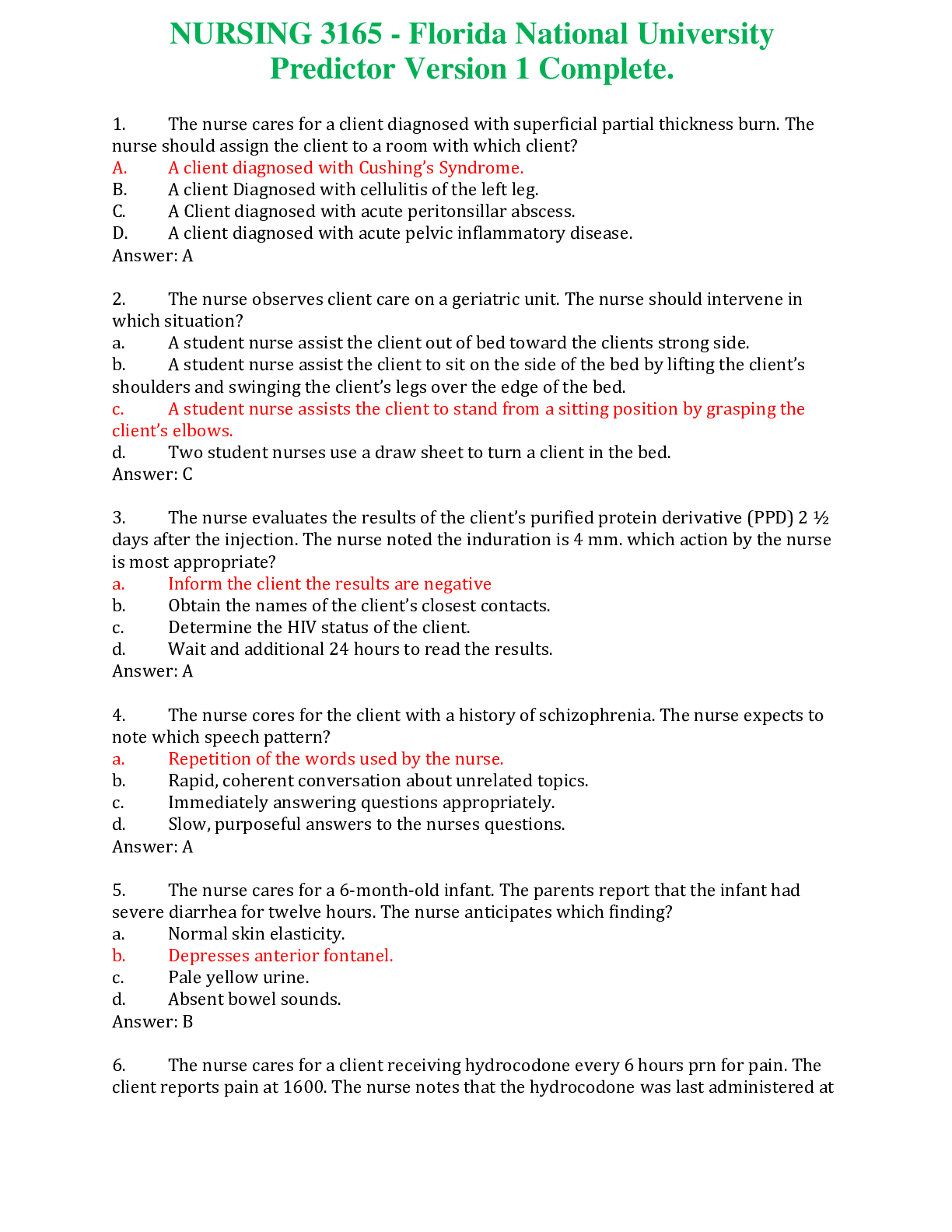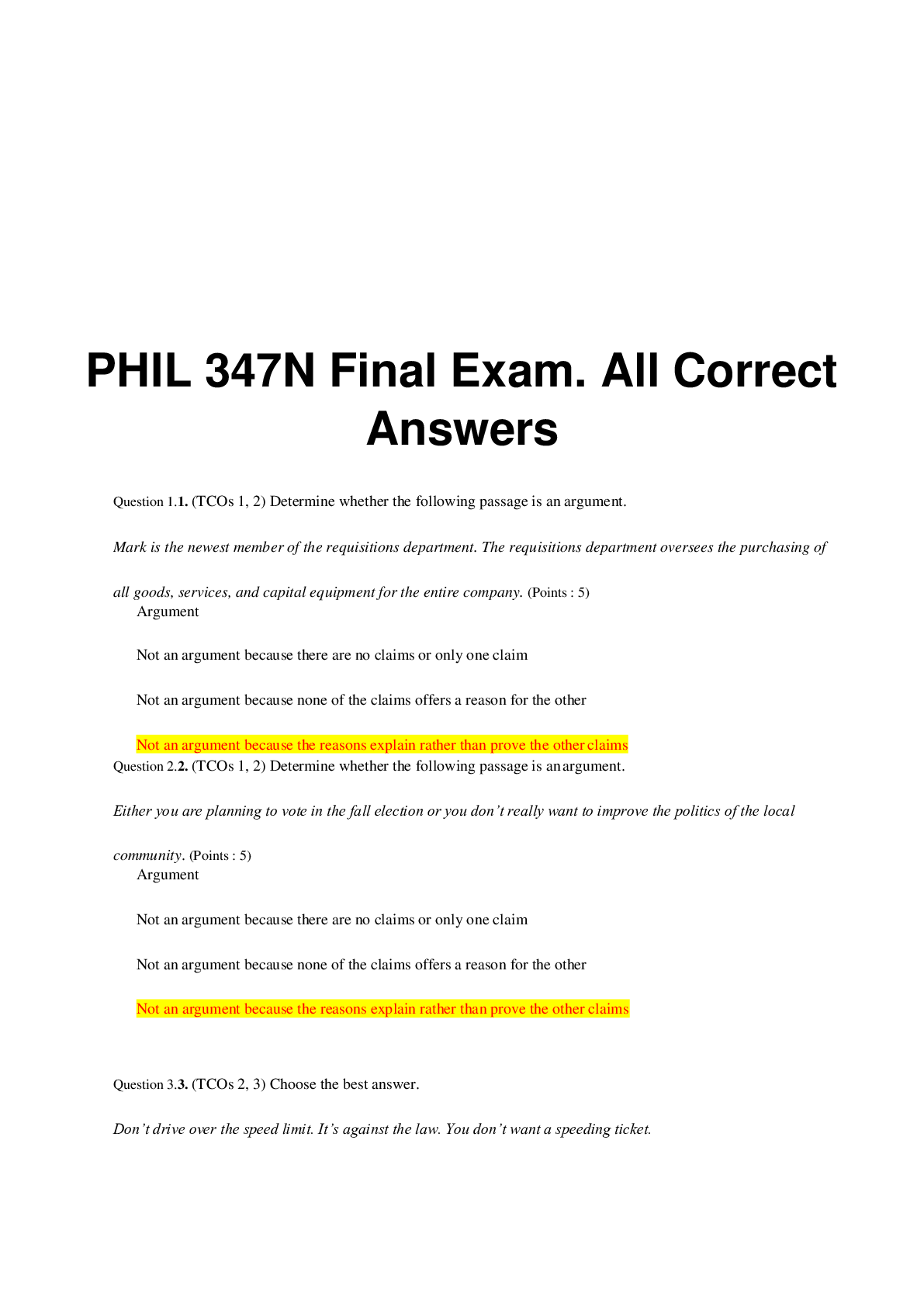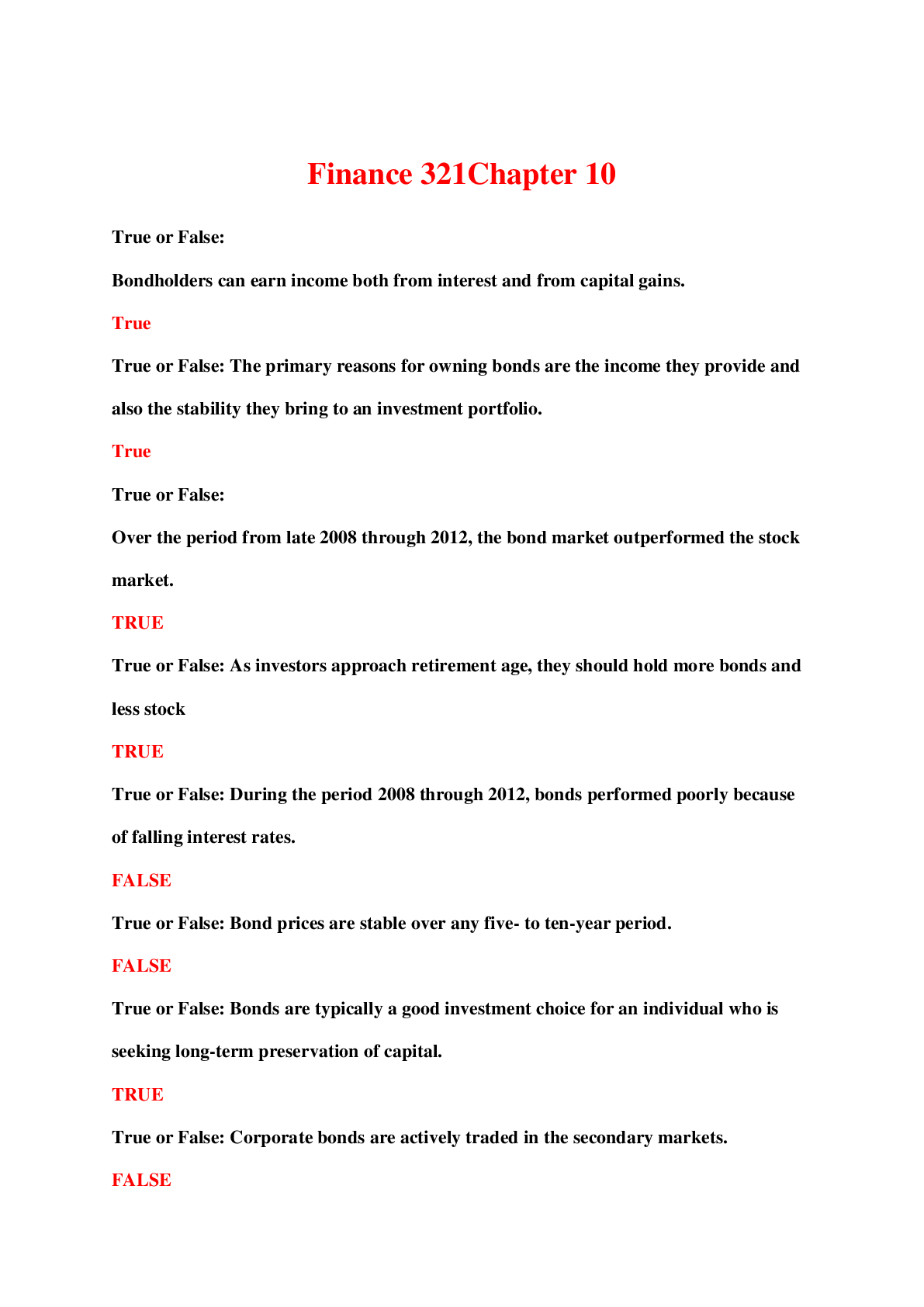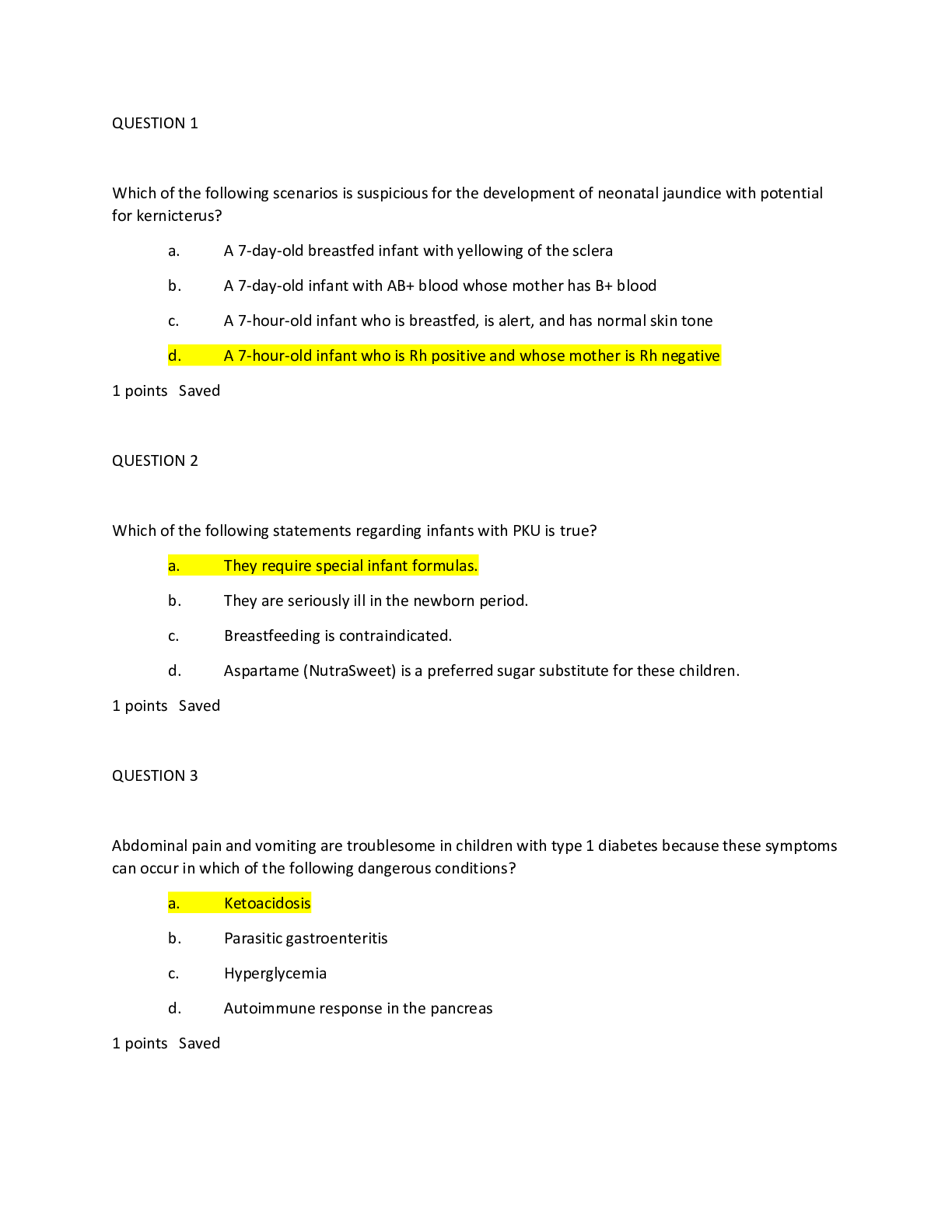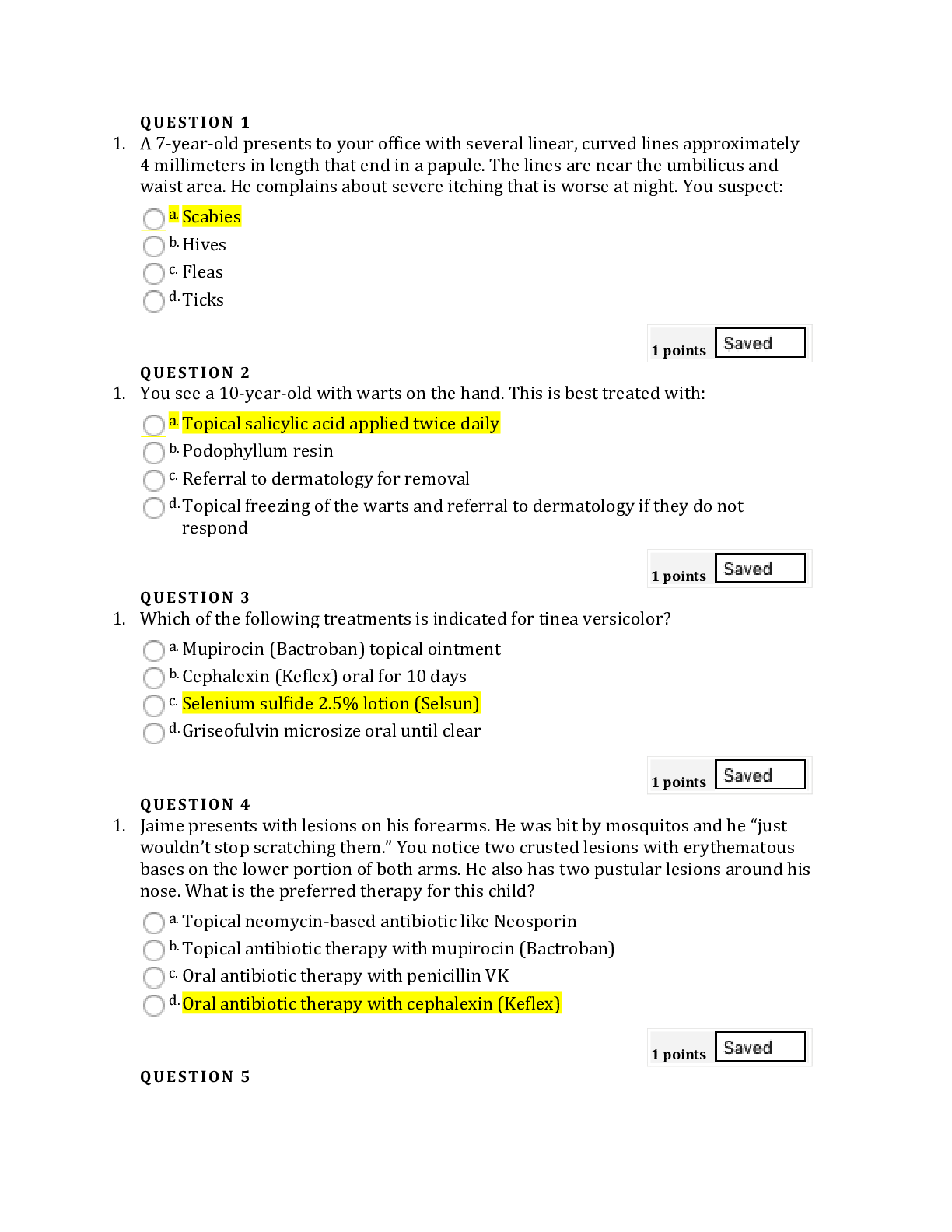*NURSING > QUESTIONS & ANSWERS > MDC EXAM 2 REVIEW (All)
MDC EXAM 2 REVIEW
Document Content and Description Below
The effects of Immobility a) Interventions that improve flexibility P.R.E.P.(Perform passive ROM, Reposition Q2HR, Encourage independent activity as much as possible even in bedrest, Provide as... sistive devices) Know examples of exercises for flexibility b) Assessment/ Findings of a patient with DVT Assessment (1) Compare distal pulses for pulse quality, observe the color and temp. of extremities, evaluate sensation and motion, and determine speed of capillary refill. Compare calf circumferences. Findings (1) Redness, warmth, tenderness, swelling (Thrombus formation), Peripheral and sacral edema. c) Identify patients at risk for skin breakdown Older adults, immobile, cognitive impairments, incontinence, poor nutrition/ malnutrition. Medications may also cause vasoconstriction and result in poor tissue perfusion. 2. Benefits of Exercise a) Rationale for weight bearing exercise Promotes bone reformation and growth (Makes bones stronger) At least 3-5 times a week Identify benefits of exercise Bone reformation and growth Cardiovascular health promotion Promotes balance and stability Reduce stress and increase energy levels b) Identify benefits of exercise Bone reformation and growth Cardiovascular health promotion Promotes balance and stability Reduce stress and increase energy levels Improves pulmonary circulation, skeletal development, skin tone Reduces systemic inflammation c) Identify negative effects of immobility on musculoskeletal system Osteoarthritis Rheumatoid Arthritis Loss of muscle strength Impaired balance Altered join mobility Decreased stability Osteoporosis Depression, isolation, anxiety, and mood change Can cause decreased peristalsis d) Explain ways to maintain proper posture for a client Place the spine in a neutral position(Resting) This allows the bones to be aligned, reduce stress and fatigue & muscle joints, and ligament can work efficiently Avoid standing in 1 position for a long period of time Do not lock your knees when standing Keep core tight and don’t bend at the waist or neck No slumping when sitting Sit close to your work and use back support Sit with feet flat on floor Sleep on firm mattress Do not wear high heels for a prolonged time, do not slump, and use a chair that supports your back. e) Identify interventions in minimizing contractures (which is a negative effect of immobility) Gently straighten out contracted extremity, fingers. Etc Mobility-encouraging interventions such as passive ROM, and rotation. Flexion and extension exercises These interventions should be performed about every 2hrs and as needed if the contractures are present 3. Identify bed positions Semi-fowlers: Patient is on their back with the head raised between 15 and 45 degrees. High-fowlers: Patient is on their back with the head of the bed raised between 60 and 90 degrees. Prone: Lying on the abdomen with the head turned to one side Supine: Lying on the back Sims: Patient lies on their side with the left thigh slightly flexed and the right thigh acutely flexed on the abdomen. Trendelenburg's Position: Patient is on their back whose lower section is inclined 15-30 degrees so that the head is lower than the body. Reverse Trendelenburg's Position: Patient is in the supine position with the feet facing downward and head is inclined 15-30 degrees. Lateral Position: Side lying position, and a pillow is often placed between the legs for patient comfort 4. Identify proper body mechanics for moving the patients in bed Transfer board Mechanical lift Transfer belt What are the proper ways to move patients in bed? 5. Explain how to use walkers to the elderly Push or lift your walker 6-12 inches forward Make sure all 4 tips or wheels of your walker are touching the ground before taking a step Step forward with your weak leg first Then step forward with your other leg placing it in front of the weaker leg 6. Be able to assess client with diabetic neuropathy Monofilament test: touch foot at the same time and have patient which time they were touched Vibration perception: use a 128 hz tuning fork and ask the patient if they are able to feel vibrations Look for ulceration or inspection of the feet [Show More]
Last updated: 1 year ago
Preview 1 out of 10 pages
Instant download

Buy this document to get the full access instantly
Instant Download Access after purchase
Add to cartInstant download
Reviews( 0 )
Document information
Connected school, study & course
About the document
Uploaded On
Apr 25, 2022
Number of pages
10
Written in
Additional information
This document has been written for:
Uploaded
Apr 25, 2022
Downloads
0
Views
38

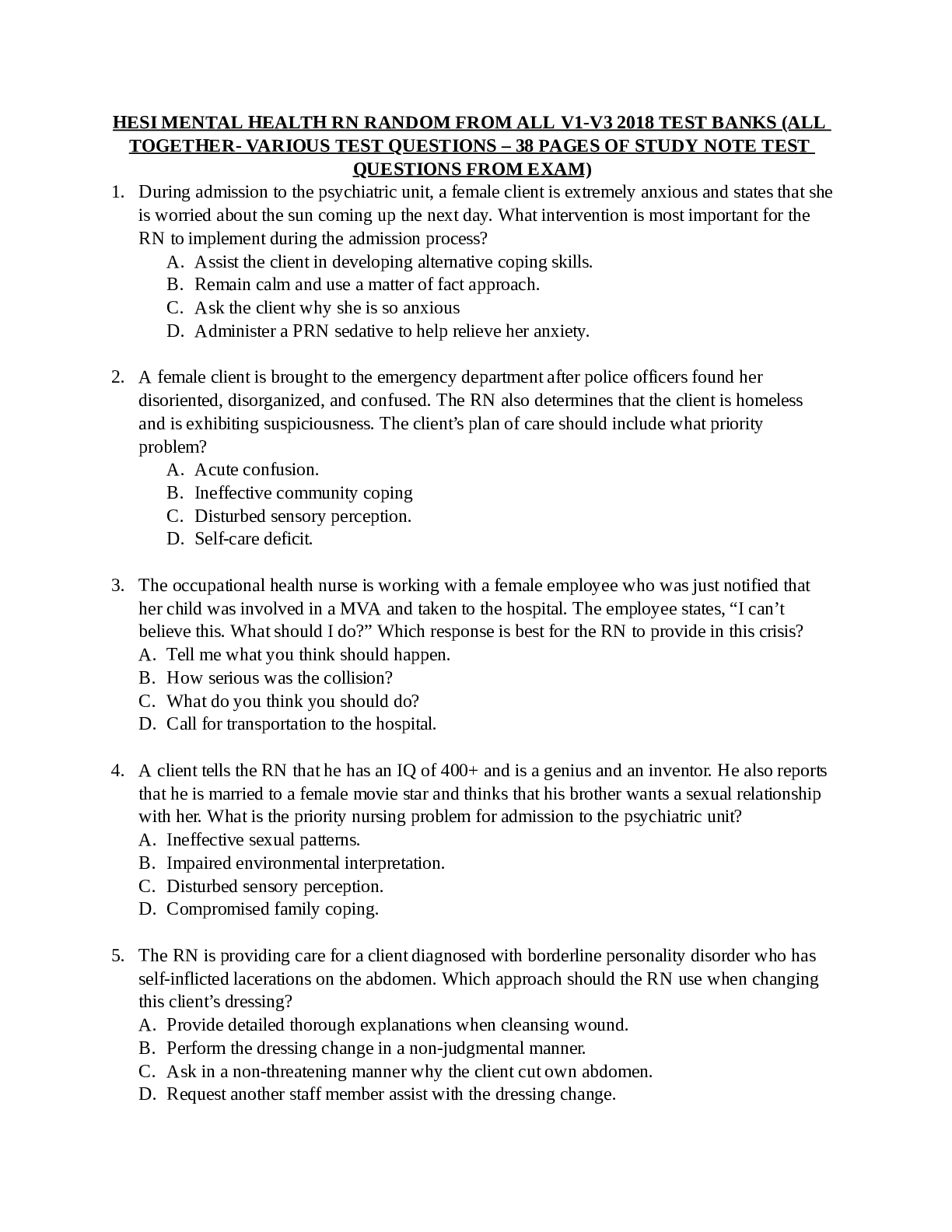

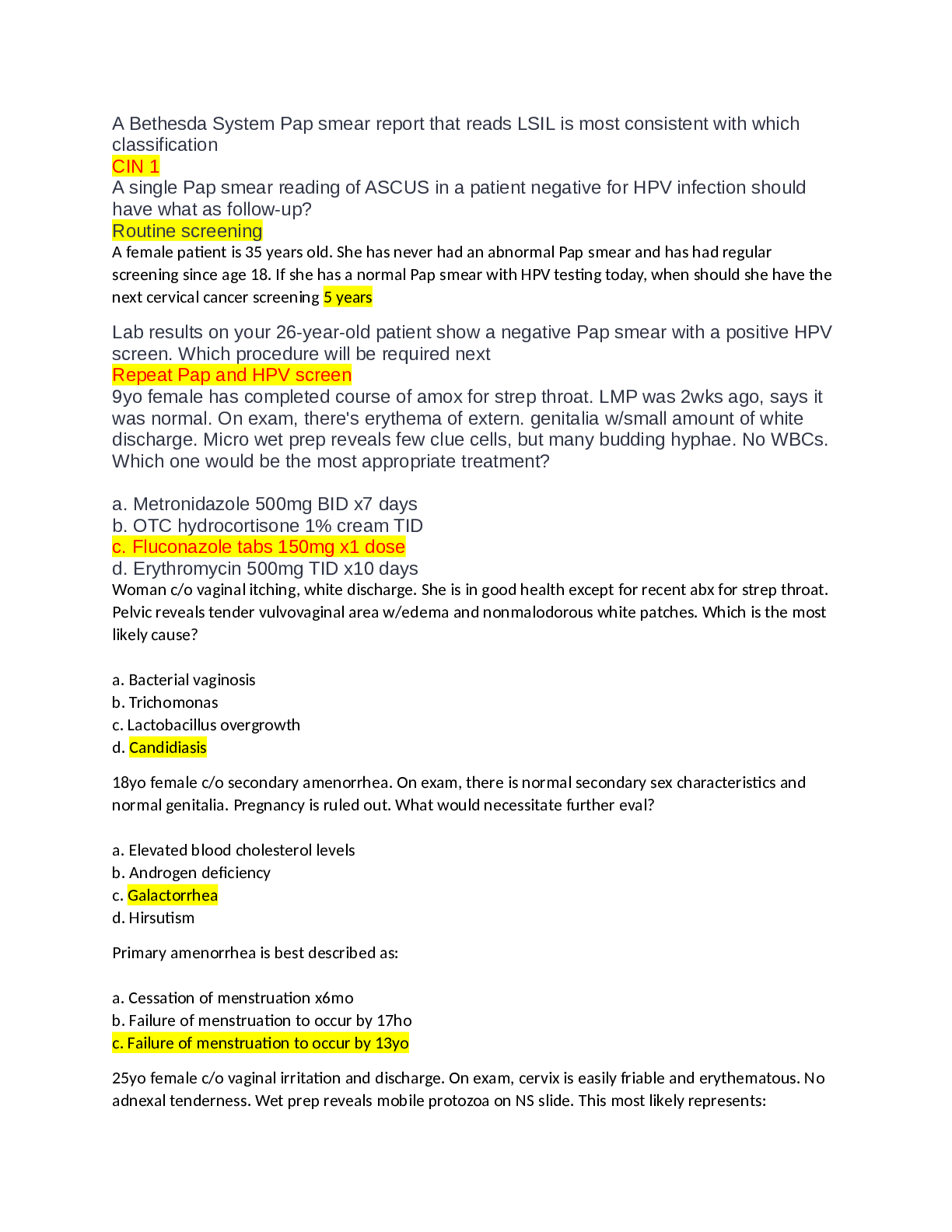

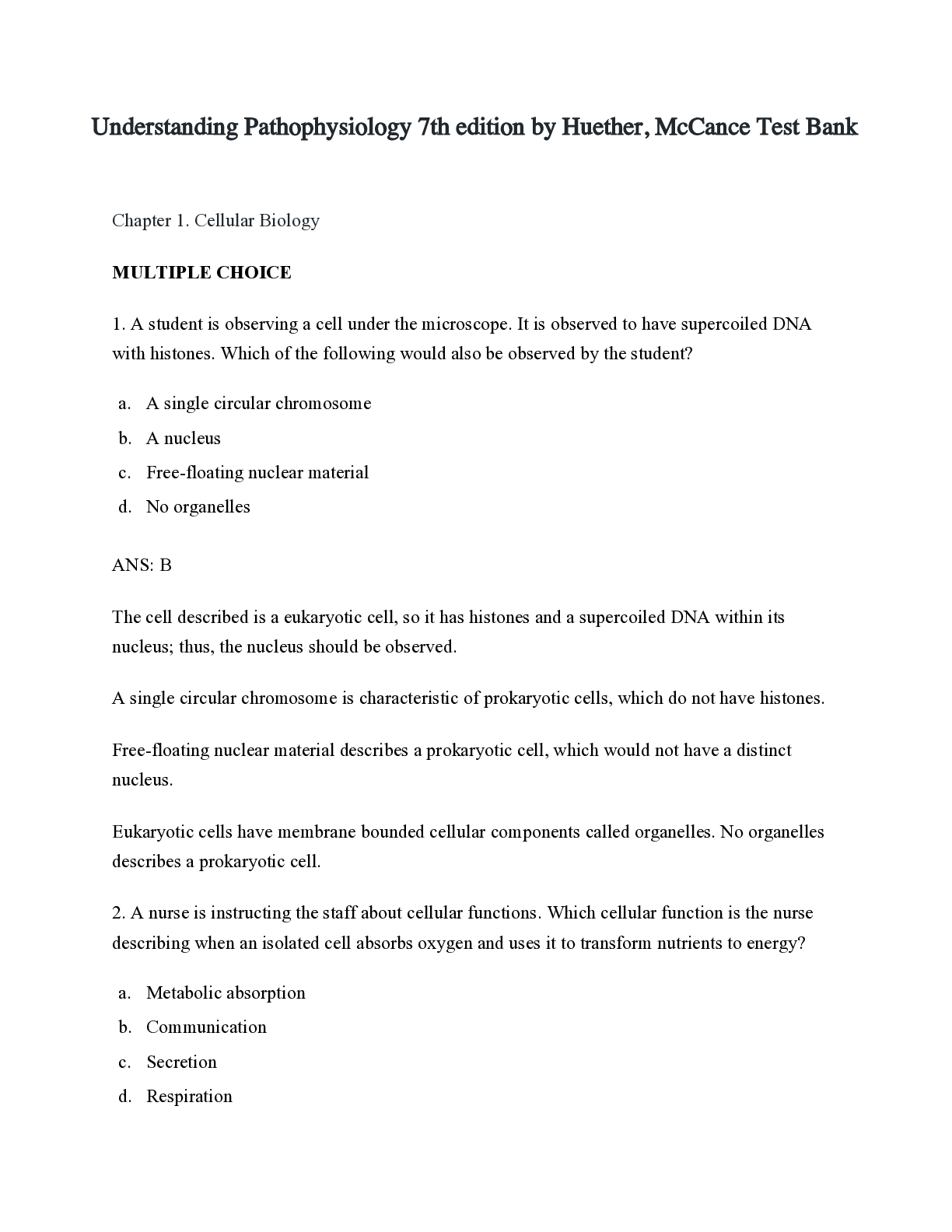
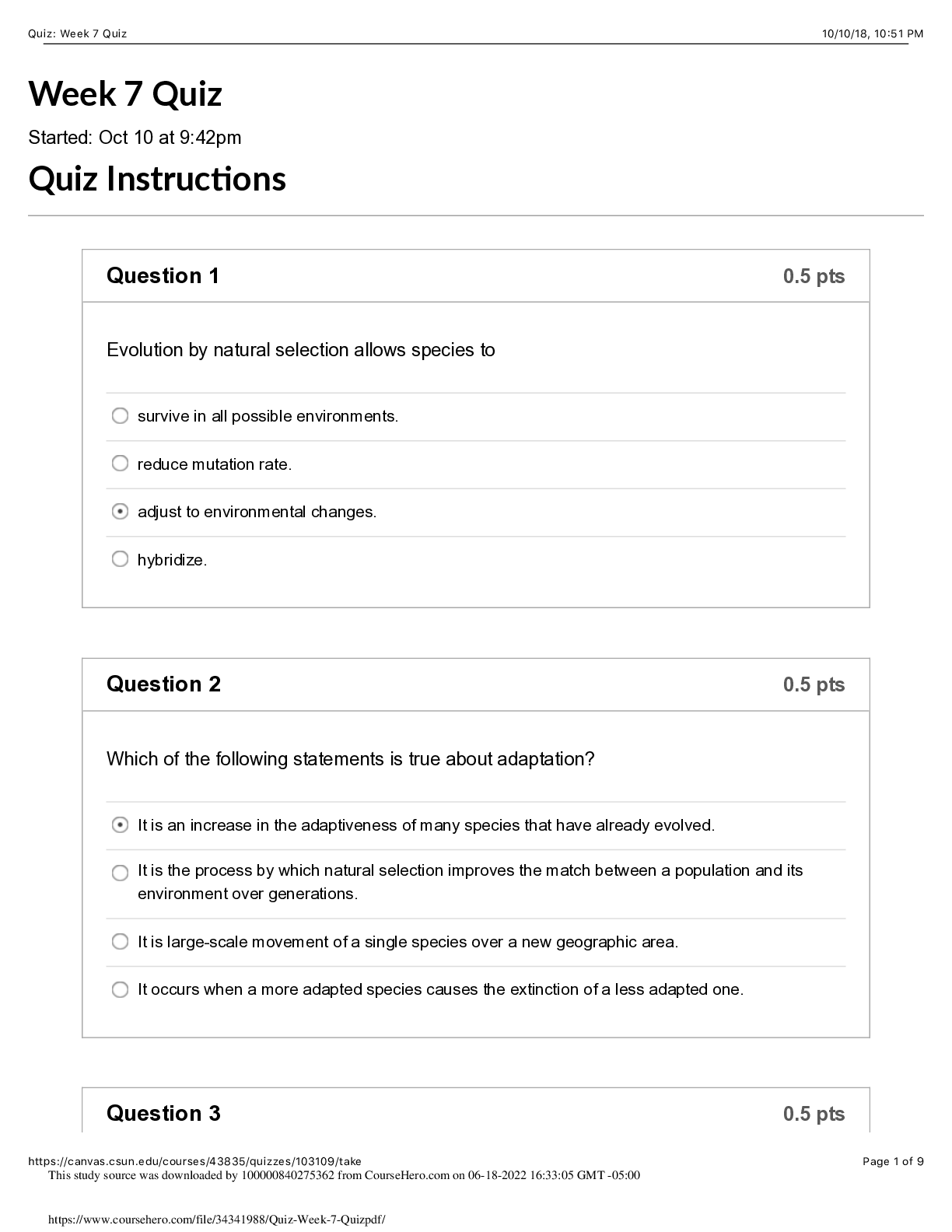
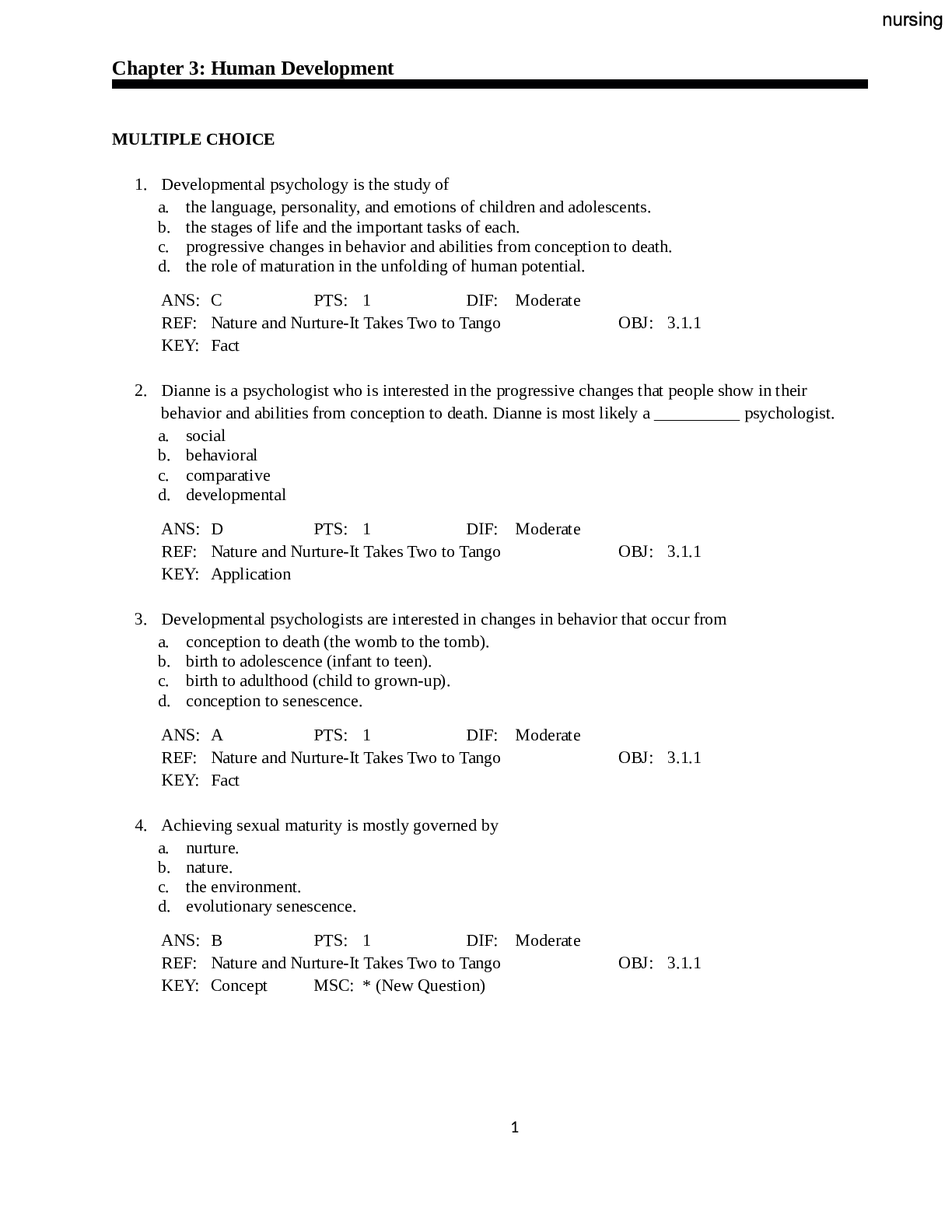

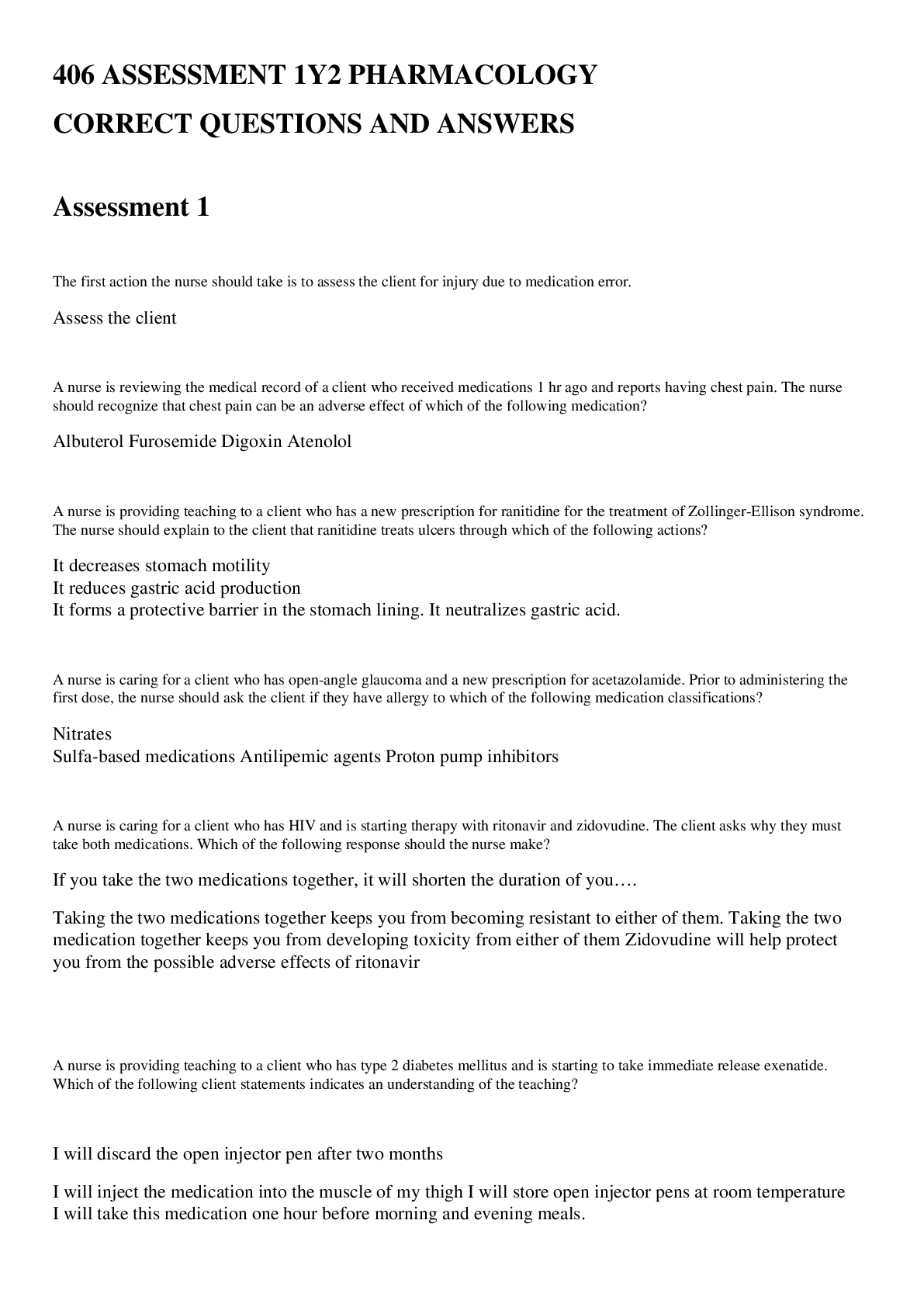
.png)
